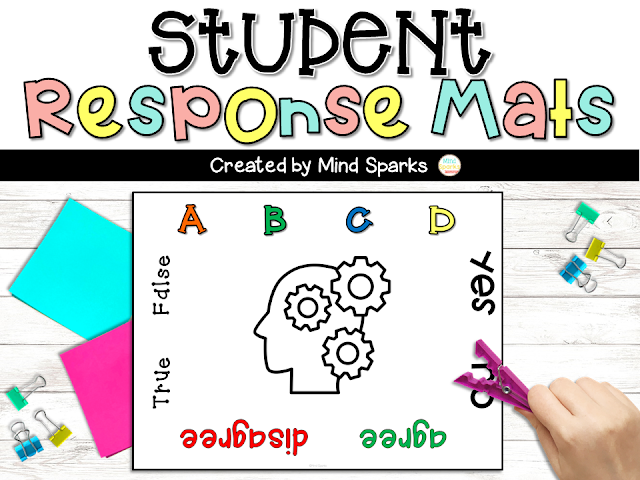In today's educational landscape--fostering student engagement is crucial for effective learning. Read about what the research says by clicking here .
One powerful strategy educators can employ is increasing opportunities to respond (OTRs). OTRs refer to moments when students actively engage with material you are teaching. Students can engage by writing, saying, or doing.
Research suggest that increasing OTRs is linked to higher levels of students achievement, as it allows learners to process information deeply and retain knowledge more effectively.
In previous posts I shared TEN ways students can engage in content in a verbal way and FIVE ways students can respond to taught material in a written way. Find those posts by clicking here or here! For this post we will focus on ways students can interact with the content by doing--kinesthetic learning!
Physical movement can be a powerful tool for understanding and retaining information. Incorporating gestures and whole body movement into the learning experience taps into multiple senses, reinforcing neural connections and making learning more memorable. Keep reading for FIVE easy strategies that will get your students responding to content in a physical way!
1. Interactive Learning Games:
Introduce games that require physical movement to reinforce learning objectives. For example use a game of charades to review vocabulary or act out historical events!
I have been playing the game Quick Draw with my students for YEARS. This is a great game to review or introduce vocabulary terms, words on a word wall or even spelling words!
- Determine the list of words you want to introduce or review
- Provide each student with a marker board
- Provide each student with a dry erase marker
- Shout (okay maybe not shout...but say) the word aloud to students
- Give students 30 seconds to illustrate the word
- Say, "3.....2.....1....show me!" and every student MUST hold up their illustration (if they are still drawing I give them a warning, and tell them they get paper pencil next time)
- Select a couple of students to explain their drawing to the class; or have them turn and talk about their drawing with a neighbor
Looking for ideas? Check out this blog post, which is filled with games to implement in your classroom!
2. Role Playing Exercises:
- Allow students to transform into characters or concepts through role-playing. This approach increases engagement AND provides a deeper understanding of material. Reader's Theater is a great way to incorporate role playing into the classroom!
3. Choreographed Mnemonics:
- Create simple choreographed movements or gestures associated with key concepts or facts. Students can perform these movements as a group, reinforcing the information through physical repetition. Check out this video from EL Education--lots of great ideas for how to incorporate movement into your classroom!
4. Hand Signals :
- Fist to five: students rate their level of understanding using a 0 to 5 scale
- Thumbs up and Thumbs down
- Pointing to the correct answer (i.e. point to the right if, point to the left if, point on your paper to the correct answer, etc.)
- Fingers as a number: with your fingers show me the correct number choice....
5. Response Cards:
Have student engage with the content by holding up response cards. If response cards are too messy to organize--try using a response mat where students use a a paperclip or some sort of marking device to mark their cards. Response cards and response mats (also called hold ups and student participation cards) are great ways to gauge students understanding and get them interacting with taught concepts. Some examples of cards you could use are:
- true/false
- thumbs up and thumbs down
- red and green
- numbered
- lettered






No comments:
Post a Comment